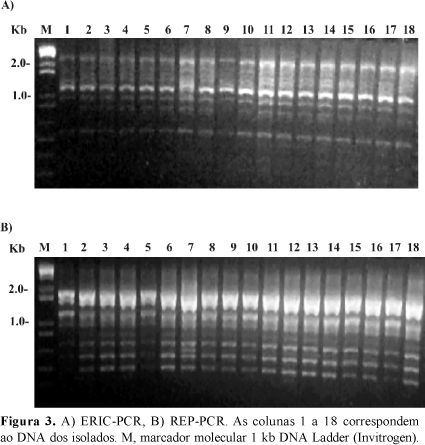Cotton is attacked by Colletotrichum gossypii (CG) and C. gossypii var. cephalosporioides (CGC). Both the pathogens are transmitted by seed and their morphological distinction is extremely difficult and inconsistent. In the present study, attempts were made to verify the genetic variability among 53 isolates of CG and CGC using RAPD-PCR, ERIC- and REP-PCR, as well as PCR-RFLP of the ITS rDNA region. Based on pathogenicity tests, 21 isolates were classified as CG and 32 as CGC. RAPD analysis was performed using eight primers and the results revealed two major groups. The first group contained 94% of the isolates originated from seeds and the second contained 95% of the isolates originated from leaves. Similar results were obtained by ERIC- and REP-PCR, where the first group contained 93% of the isolates originated from seeds and the second contained 78% of the isolates originated from leaves. When the amplified product of the ITS rDNA region was digested with eight restriction enzymes, similar banding patterns were observed for all isolates. Results of RAPD, ERIC- and REP-PCR demonstrated the existence of genetic variability among the seed and leaf isolates and these two groups could be clearly distinguished. Further studies need to be performed using other molecular techniques in order to obtain markers that can distinguish CG and CGC isolates in infected seeds.
Gossypium hirsutum; ramulosis; genetic variability; molecular analysis





